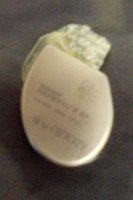A Family Affair
When my nurse suddenly called out sick last night, the nursing agency had no one to send instead. It was extremely last minute. Plus, it was Christmas Eve and few nurses were available to work in the first place.
That meant that my mother had to stay up while I slept, in case my ventilator malfunctioned or its tubes came loose. Because a humidifier is connected to ventilator tubing, water droplets collect in the tubing. So the water must be emptied every hour. I also need medications at the end of the shift. They need to be mixed up and put into my feeding tube.
The most difficult part for anyone taking care of me overnight is obviously staying awake. Fortunately, my two sisters volunteered to keep my mother company throughout the night. I've never wanted my disease to affect my sisters any more than it had to, but I was really touched by their willingness to help.
I obviously prefer to have my nurses take care of me. They're more familiar with my routine, from medications to how I like to be positioned in my bed. But I appreciated how my family pulled together at a time like this.











